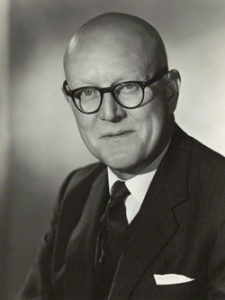[:fr]
Le pont Bailey, qui porte le nom de l’architecte Donald Bailey, est un pont provisoire construit par les Alliés là où les ponts avaient été détruits, ou bien aux endroits où les ponts existants n’étaient ni assez solides ni assez larges pour permettre aux véhicules de guerre de passer.
Les ponts Bailey ont été construits par centaines en Normandie dès le lendemain du Débarquement en juin 1944 et en Europe occidentale jusqu’à la fin de la guerre.
Le génie de la conception du pont Bailey résidait dans la simplicité de son montage. Sans aucune aide mécanique, une équipe du génie (Royal Engineers) pouvait monter et démonter un pont rapidement et très facilement.
Le premier pont Bailey en France a été construit à quelques centaines de mètres au sud du Pegasus bridge. Au cours de la Bataille de Normandie, 17 ponts Bailey ont été construits sur l’Orne et le canal afin de permettre aux renforts de traverser.
Le pont Bailey exposé dans le parc du Mémorial Pegasus a été utilisé sur la Dives jusqu’en 2001.
De nombreux ponts Bailey datant de la guerre sont toujours utilisés dans le monde.
An original element of Bailey Bridge, installed in Normandy by the Allies in 1944 and used until 2000 is on display in the park of the museum.
When war broke out in 1939, the British Army was ill prepared for the conflict. Two of the principal deficiencies were in armour and bridging equipment. The Armoured Corps was composed of light tanks which required only a relatively lightweight bridge to span waterways. With the introduction, in 1940, of heavier armoured vehicles, such as the forty ton Churchill tank, a new type of bridge was required.
It was at this time that a middle aged civil engineer, Donald Bailey, and the Experimental Bridging Establishment at Christchurch entered the history books.
In 1936 he invented what was to become a War Winner. However due to lack of funding and indifference on the part of the War Office his bridge design went unnoticed. A chance meeting, in 1940, with a senior Royal Engineer, led to Bailey being ordered to construct a full-size example of his bridge. Work which would normally require a year had to be carried out in two and a half months!
The bridge had to meet three criteria;
Be capable of supporting loads of up to 70 tons.
Simple in design, for rapid construction.
To be built without the requirements for heavy equipment such as a crane.
No heavy lifting equipment being required meant that the elements of the bridge could be lifted by hand. The heaviest piece of the bridge weighed 280 kilos enabling it to be carried by 6 men. No welding was involved in the construction. The bridge was assembled using bolts, clamps and steel pins. It was a full size Mecanno kit which had to fit into a truck.
On May 1st 1940, a 70 feet section was assembled in 36 minutes!
By December 1941, the first elements were coming off the construction line. 650 companies were involved in its manufacture.
In Tunisia, in 1942, the first bridge, in a combat zone, was installed by the Royal Engineers. During the Mediterranean campaign over 2000 bridges were built with a further 1500 being constructed during the campaign in North Western Europe. From 1942-45, 500,000 tons of Bailey Bridge were manufactured, put end to end the elements would cover a distance of 2,500 kilometres, London to Moscow!
Donald Bailey was appointed director of the Experimental Bridging Establishment in 1945. In 1946 he received a knighthood for his services to the war effort.
Sir Donald Bailey retired in 1966, living in Christchurch until his death in 1985.
Today, throughout the world, Bailey Bridges are still in use from as far a field as Australia, South Africa, Hawaii, Africa and Normandy. What more could this modest man have wanted as a tribute to his genius.


